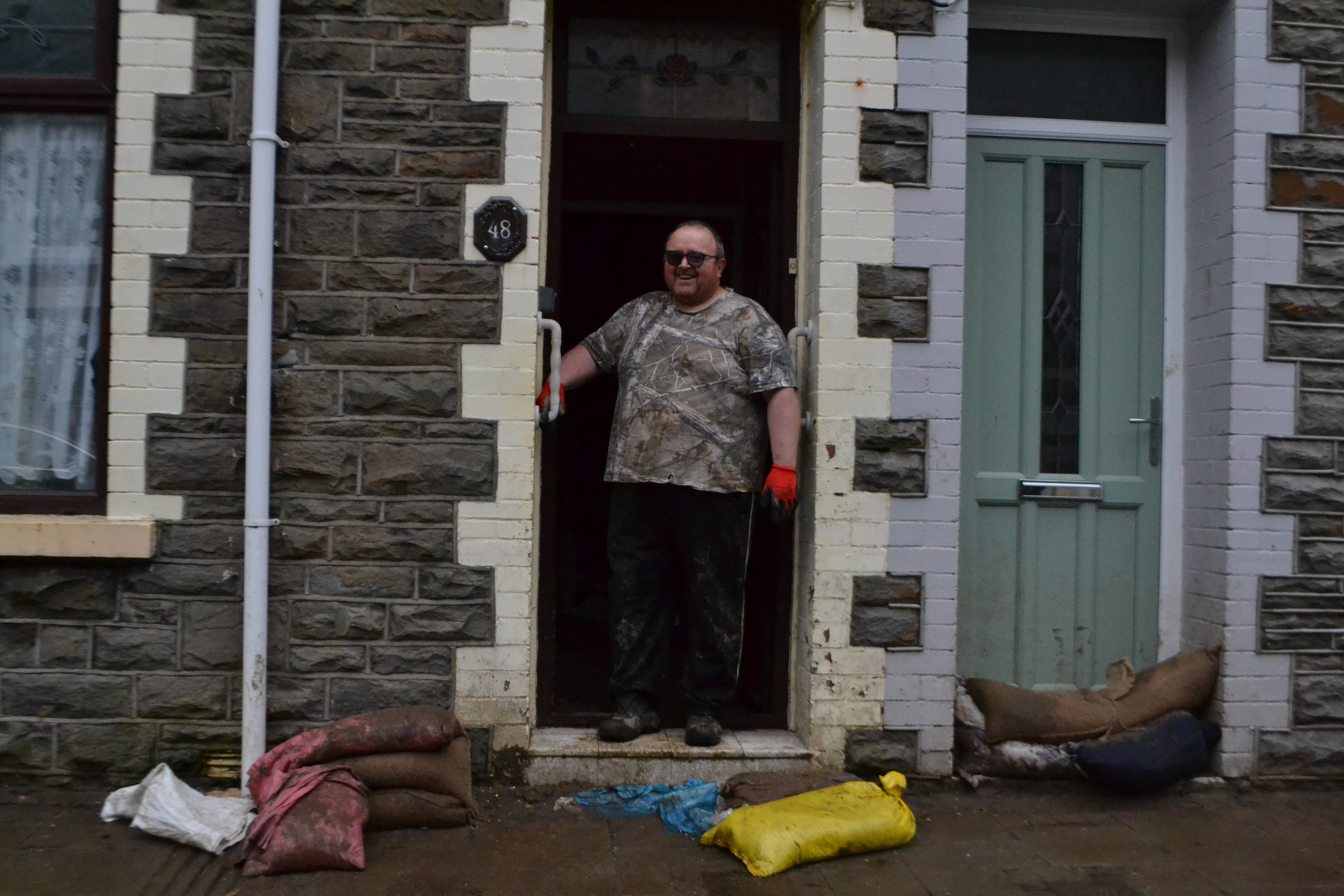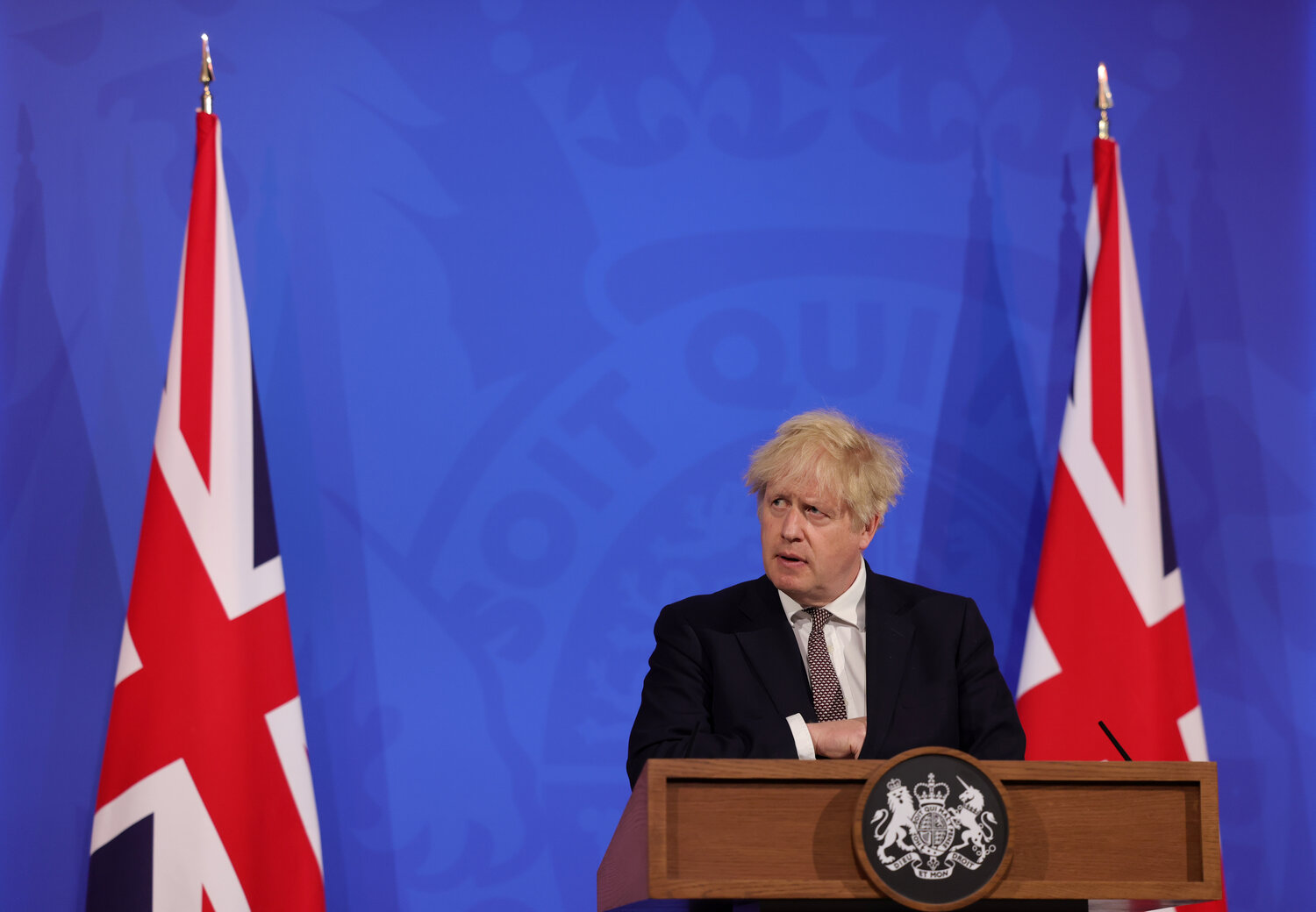
Wales Faces Climate Disaster – But We Can’t Rely On Our Government To Stop It | Carys Hopkins
Flooding from both river and sea is the biggest climate threat to Wales. But Welsh Government’s response to climate breakdown falls far short.
Image: A man clears up after flooding in the Rhondda, 2020, SC Cook
As the world faces climate disasters that are coming with greater frequency and destructiveness, we too in Wales are seeing the impact of ecological breakdown.
Storm Ciara and Storm Dennis, which hit areas in Gwynedd, the Valleys and Conwy, caused catastrophic flooding and dangerously high winds. 3,130 properties were damaged as a result, displacing thousands of people in some of our most deprived communities.
Flooding —from both river and sea— is currently the biggest climate threat specific to Wales. As a result of the devastation brought by such events, people may have to move to a new location within Wales, effectively making them climate refugees within their own country.
This is happening on a global scale, but it is sometimes difficult to understand the impact in geographically distant places. Seeing it on your own doorstep brings home the real threat of climate breakdown.
Aside from the physical damage that climate disasters cause, displacement seriously damages communities and families, and can lead to climate anxiety or climate depression.
An interactive map allows you to visualise what our homes will look like if fossil fuels continue to be burned and perpetuate climate change further.
And this is to say nothing of the increased risk of military conflict, famine and death – all of which disproportionately impacts the Global South and poorer parts of the world.
For us in Wales, we must mitigate against the worst effects of climate change whilst doing everything we can to stop global temperatures rising further. But Welsh Government’s response to this crisis falls far short of what is needed.
Whilst Welsh Government have just released the TAN15 plan— which will ensure future planning developments to meet criteria in order for planning to go ahead – this does little to address the existing homes in flood risk areas, some of which are now flooding on a regular basis.
This raises the question of whether Welsh Government is ready for rising sea levels and floods which will force people out of their homes? Do they have a displacement strategy for those who will be worst affected? There appears to be no such plan.
And what about tackling climate change itself?
Whilst Wales has a welcome ban on fracking and the extraction of fossil fuels in Wales, the National Grid we use creates a complicated trail leading straight back to the fossil fuel industry.
You can see the current energy being used and transferred within the National Grid on their website. As I am writing this, fossil fuels make up 54% of the energy being transferred across the nations of Wales, England, Scotland and the north of Ireland
But using 100% renewable energy is possible now, so why can’t we demand this of the National Grid.
Fintan Slye, Executive director of the National Grid has said “We’re confident that by 2025 we will have periods of 100% zero carbon electricity”.
This may sound like a bold statement, but it is completely non-committal – a ‘period’ of 100% zero carbon can mean several things.
Without an independent source of energy, Welsh Government is clearly limited in what it can do. That hasn’t stopped them addressing the issue, but their strategy raises more questions than it answers.
On September 13th, they released an opaque statement saying that they were looking at a “joint approach” to develop “an integrated energy grid for net zero.” It was, however, unclear what exactly this would entail or whether it would emerge before 2050. On the face of it, the plan is about integrating gas and electric infrastructure to reduce carbon. But in reality it is a public / private partnership with for-profit firms that commits to very little.
To make things even more confusing, the Welsh Government described the project as follows: “This work will gather and assess evidence, consider scenarios, and advise on short-term ‘low regret’ actions that can be taken immediately.” As Greta Thunberg recently put it, we can translate such sentences as “blah blah blah”.
But the statement did hint at what a potential solution might be, and it wasn’t promising.
In the statement, Julie James the Minister for Climate Change, mentions hydrogen energy and its key role in integration for the energy system. In a parallel statement, Sarah Williams, of private firm Wales & West Utilities, who are partnering Welsh Government on the scheme, talked about “unlocking the potential of green gas like hydrogen and biomethane.”
This should ring alarm bells. The great ‘hydrogen integration’ myth comes straight out of the mouths of big oil. Within big oil’s websites the word integration always follows hydrogen. Because the most common type of hydrogen uses fossil fuels to make energy, big oil is hopping on the bandwagon and spending lots of time (and money) trying to convince us hydrogen is the next big thing. For them, it guarantees them a future in extracting gas and oil.
The UK government’s hydrogen strategy also outlines ambitious plans to integrate hydrogen energy into our energy system. The strategy provides little clarity on the type of hydrogen that will be being used and where it will be sourced. But it is evident it will likely lean toward Blue hydrogen and Grey hydrogen, both of which use natural gas —a fossil fuel— to make the energy with. So how does this fit in with commitments and agreements to reduce (and effectively stop) the burning of fossil fuels? It doesn’t.
We want and need radical change now. By looking toward 2050, the room for error, delay and inaction is far too great a risk.
With the upcoming COP26 summit, we can’t rely on the Welsh or UK Government to address the climate catastrophe we face.
On November 6th, Cardiff will join cities from across the world in demanding real climate justice. We need to make sure these protests are huge in size and that we emerge with a climate movement capable of facing up to the enormous challenges ahead.
Carys Hopkins is a Welsh writer focused on climate justice, social justice and environmentalism. She is a part of the Cardiff Cop26 Coalition


How The West Made Putin | Anindya Bhattacharyya